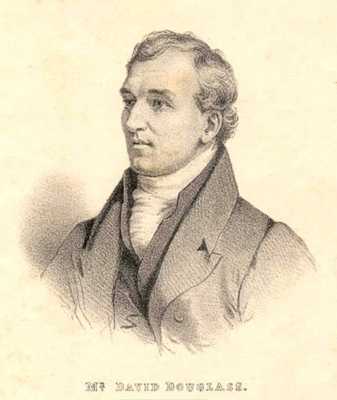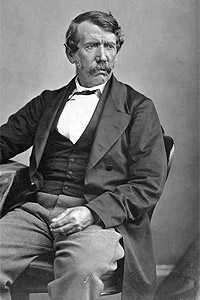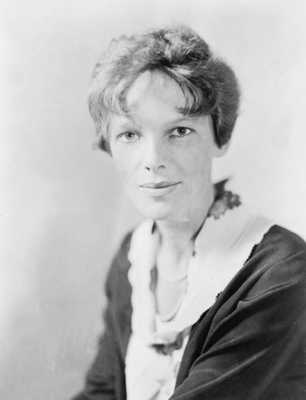 Miscellaneous
Miscellaneous  Miscellaneous
Miscellaneous  Our World
Our World 10 Natural Disasters That Shocked the World in 2024
 Weird Stuff
Weird Stuff 10 Unusual Items Credited with Saving People from Danger & Death
 Music
Music 10 Famous Songs That Bands Refuse to Play Live
 History
History 10 Instances Where One Vote Changed the World
 Movies and TV
Movies and TV 10 Reality TV Shows Sued by Their Participants
 Crime
Crime Ten Interesting Tales of Trials Decided by Jury Nullification
 Animals
Animals 10 Cool Facts about the Most Mysterious Mammal on Earth
 Technology
Technology 10 Old-School Technologies Making Surprising Comebacks
 Movies and TV
Movies and TV 10 Movie Monsters Who Went from Scary to Silly
 Miscellaneous
Miscellaneous 10 Words Grammar Snobs Say Shouldn’t Exist but Do
 Our World
Our World 10 Natural Disasters That Shocked the World in 2024
 Weird Stuff
Weird Stuff 10 Unusual Items Credited with Saving People from Danger & Death
Who's Behind Listverse?

Jamie Frater
Head Editor
Jamie founded Listverse due to an insatiable desire to share fascinating, obscure, and bizarre facts. He has been a guest speaker on numerous national radio and television stations and is a five time published author.
More About Us Music
Music 10 Famous Songs That Bands Refuse to Play Live
 History
History 10 Instances Where One Vote Changed the World
 Movies and TV
Movies and TV 10 Reality TV Shows Sued by Their Participants
 Crime
Crime Ten Interesting Tales of Trials Decided by Jury Nullification
 Animals
Animals 10 Cool Facts about the Most Mysterious Mammal on Earth
 Technology
Technology 10 Old-School Technologies Making Surprising Comebacks
 Movies and TV
Movies and TV 10 Movie Monsters Who Went from Scary to Silly
Top 10 Adventurers Who Never Returned Home
For every handful of successful adventurers and pioneers who retire in comfort, there are probably many who died, or were killed, or disappeared underway. Many, probably most of them, died young and early, often of disease, before they had the least chance to make a name and reputation for themselves. So perished the younger brother of the great Alfred Russel Wallace, in Brazil. To become an immortal martyr to adventure you have to be a well-known achiever before your curtains close, or be part of some stirring enterprise such as space flight, or otherwise catch the public imagination. All my individuals, pairs or parties fall into one or other of those categories.
To avoid controversy I have set them out chronologically by the dates they died or disappeared. My selection is based on cases known to myself, filled in (as acknowledged) with details from Wikipedia. I have tried to make it as international as possible, and also to acknowledge the sacrifices made by women. Nevertheless, it is heavily biased towards men, as they are the main protagonists of these enterprises, and towards Britons, who have such a tradition of exploration … and dying in the course of it! Besides, the personae had to be at least familiar by name to an English-speaking public.

Ferdinand Magellan was a Portuguese explorer. He was born in Sabrosa, in northern Portugal, but later obtained Spanish nationality in order to serve King Charles I of Spain, in search of a westward route to the “Spice Islands”. Magellan’s expedition of 1519–1522 became the first expedition to sail from the Atlantic Ocean into the Pacific Ocean, and the first to cross the Pacific. It also completed the first circumnavigation of the Earth, although Magellan himself did not complete the entire voyage. At the request of the Rajah of Cebu, Magellan traveled to the Mactan with the command to kill (but the intention to convert) the Rajah’s enemy, Datu Lapu-Lapu. Upon arrival, a battle ensued and Magellan was hit by a bamboo spear and later surrounded and finished off with other weapons.

Lope de Aguirre was a Basque Spanish conquistador in South America. Nicknamed El Loco, ‘the Madman’, Aguirre is best known for his final expedition, down the Amazon river, in search of the mythical El Dorado. At the beginning, he was a minor official of the expedition, but he mutinied and gained control of it, and then rebelled against, and defied, the Spanish monarch, Philip II. Aguirre was defeated and slain. From then on, he was considered a paradigm of cruelty and treachery in colonial Spanish America, and has become an antihero in literature, cinema and other arts.
In 1561, he seized Isla Margarita and brutally suppressed any opposition to his reign, killing many innocent people. When he crossed to the mainland in an attempt to take Panama, his open rebellion against the Spanish crown came to an end. He was surrounded at Barquisimeto, Venezuela, where he murdered his own daughter, Elvira, “because someone that I loved so much should not come to be bedded by uncouth people”. He also killed several followers who intended to capture him. He was eventually captured and killed. Aguirre’s body was cut into quarters and sent to various cities across Venezuela.
The Amazon river odyssey of Aguirre is the subject of a splendid film by Werner Herzog, ‘Aguirre, Wrath of God’, with Klaus Kinski as the eponymous conquistador.

Captain James Cook was a British explorer, navigator and cartographer, ultimately rising to the rank of Captain in the Royal Navy. Cook made detailed maps of Newfoundland prior to making three voyages to the Pacific Ocean, during which he achieved the first European contact with the eastern coastline of Australia and the Hawaiian Islands, as well as the first recorded circumnavigation of New Zealand. Cook charted many areas and recorded several islands and coastlines on European maps for the first time. His achievements can be attributed to a combination of seamanship, superior surveying and cartographic skills and courage in exploring dangerous locations to confirm the facts.
On 14 February, at Kealakekua Bay in Hawaii, some Hawaiians took one of Cook’s small boats. Normally, as thefts were quite common in Tahiti and the other islands, Cook would have taken hostages until the stolen articles were returned. Indeed, he attempted to take hostage the King of Hawaiʻi, Kalaniʻōpuʻu. The Hawaiians prevented this, and Cook’s men had to retreat to the beach. As Cook turned his back to help launch the boats, he was struck on the head by the villagers and then stabbed to death as he fell on his face in the surf. Hawaiian tradition says that he was killed by a chief named Kalanimanokahoowaha.
The esteem in which he was nevertheless held by the Hawaiians resulted in his body being retained by their chiefs and elders. Following the practice of the time, Cook’s body underwent funerary rituals similar to those reserved for the chiefs and highest elders of the society. The body was disemboweled, baked to facilitate removal of the flesh, and the bones were carefully cleaned for preservation as religious icons, in a fashion somewhat reminiscent of the treatment of European saints in the Middle Ages.
You may also be interested to know that it was the Earl of Sandwich (who gave his name to the famous snack) that paid for much of Cook’s adventuring, and is the reason that Cook initially named Hawaii the Sandwich Islands.

Douglas, the son of a humble Scottish stonemason, was apprenticed as a gardener’s boy. He went on to obtain a post at The Glasgow Botanic Gardens, where he improved his education by voluntarily attending botany lectures. This drew the attention of some leading figures in the horticultural world who were looking for a vigorous, practical but intelligent young man, with the initiative to explore North America for potential garden plants. Douglas embarked on a series of explorations that made him famous and resulted in his name being given scientifically and popularly to the Douglas fir. On the final journey of his rather short career, Douglas traveled to Hawaii. While he was looking into a pit trap at one of the wild descendants of the cattle brought to the island by Captain Vancouver, he got too close to the edge, which caved in, and he was trampled and gored to death by the enraged beast.

For Africa, it seemed a certain bet someone well-known must surely have been fatally savaged by lions. However, the dramatic killing of the game hunters in the railway carriage by the cunning pair of Tsavo lions appears to be myth successfully appropriated by the film industry. Livingstone, on the other hand, certainly was attacked and mauled by a lion, but saved from death by the brave intervention of an African servant. However, the well-known missionary, explorer and colonial pioneer, especially famous for his epic meeting with Stanley, never did return to his native Scotland and family, anyway. He died of malaria and internal bleeding caused by dysentery. He took his final breaths while kneeling in prayer at his bedside.
Odd fact. A particular set of African succulents is called Livingstone daisies. Nothing to do with the good doctor, however. It’s just that the rounded, cryptic plant bodies look exactly like weathered desert stones… I presume.

Captain Robert Falcon Scott was a Royal Navy officer and explorer who led two expeditions to the Antarctic regions: the Discovery Expedition, 1901–04, and the ill-fated Terra Nova Expedition, 1910–13. During this second venture, Scott led a party of five which reached the South Pole on 17 January, 1912, only to find that they had been preceded by Roald Amundsen’s (item 3) Norwegian expedition. On their return journey, Scott and his four comrades all perished from a combination of exhaustion, starvation and extreme cold. Following the news of his death, Scott became an iconic British hero, a status maintained for more than 50 years and reflected by the many permanent memorials erected across the nation. In the closing decades of the 20th century, the legend was reassessed as attention focused on the causes of the disaster that ended his and his comrades’ lives, and the extent of Scott’s personal culpability.

Shackleton’s early expeditions included the first journey to the southern magnetic pole, as well as charting a route through the trans-antarctic mountains that was later used by Scott on his southward trek. Being that the pole had already been conquered, Shackleton decided the next great quest would be to traverse the continent from shore to shore.
Tragically, this expedition was put to a halt when Shackleton’s ship (ironically called the HMS Endurance) was trapped in pack ice and eventually crushed, stranding the crew on the near by Elephant Island. For almost a year the crew survived on seal, penguin and whale meat. They used seal blubber to make oil for fires to stay warm, and in one popular photo were seen playing soccer on the ice shelf. Shackleton realized that without help they couldn’t live like this forever, and decided to use the surviving longboats to make a treacherous voyage to a whaling station on the remote south Georgia island, 800 miles northward. With little food and water, and no medical supplies, Shackleton and five of his men braved the ice-packed seas.
After weeks, they landed on South Georgia island, starving and suffering from dehydration. Unfortunately, they’d landed on the uninhabited southern coast, so for the last arduous leg of the journey Shackleton and his men had to cross a mountain range that no one had previously crossed. He reached the whaling station and started to work on an expedition to rescue his crew. After almost a year and a half marooned in the antarctic, Shackleton’s crew was finally met with relief ships that took them home. Despite the fact his trans antarctic expedition was, ultimately, a failure as a voyage, it was a victory for the tenacity of the human spirit.

Amundsen is probably one of the best known polar explorers in history, and has the unique distinction of being the first man to reach both the north and south pole in his lifetime. Compared with Scott’s expedition, which was riddled with setbacks and problems, Amundsen’s south polar expedition was fairly uneventful. His use of hearty sled dogs instead of Scot’s more fragile Norwegian ponies, as well as careful use of his resources, were the reason for his smooth journey, but Amundsen’s expedition was still extremely difficult.
He and his men trekked across hundreds of miles of totally unexplored mountainous regions and planted their flag on the south pole on December 14th, 1911, naming the area “Polheim” or “Land of the pole”. Not disliking his polar rival, Amundsen left a note for Scott Reading:
“Dear Captain Scott — As you probably are the first to reach this area after us, I will ask you to kindly forward this letter to King Haakon VII. If you can use any of the articles left in the tent, please do not hesitate to do so. The sledge left outside may be of use to you. With kind regards I wish you a safe return.
Yours truly,
Roald Amundsen.”
Amundsen only lead that one expedition to the pole, but spent the rest of his life exploring until he disappeared near Bear Island while assisting in a rescue mission.

Amelia Earhart was a noted American aviation pioneer and author. Earhart was the first woman to receive the U.S. Distinguished Flying Cross, awarded for becoming the first aviatrix to fly solo across the Atlantic Ocean. She set many other records, wrote best-selling books about her flying experiences and was instrumental in the formation of The Ninety-Nines, an organization for female pilots. During an attempt to make a circumnavigational flight of the globe in 1937, in a Purdue-funded Lockheed Model 10 Electra, Earhart disappeared over the central Pacific Ocean near Howland Island. Fascination with her life, career and disappearance continues to this day.
The equally famous British aviatrix Amy Johnson lost her life while ferrying combat planes during the Second World War. The same conflict saw the rise to fame and survival of undoubtedly the most daring aviatrix of all time, Hitler’s darling, Hannah Reisch, whom he refused to allow to join an active fighter squadron, and who flew all the most advanced and dangerous German experimental jet and rocket aircraft.

Although driven by paranoid grandiosity, Crowhurst was also a man of notable courage and intelligence who ultimately fell victim to a monstrous deception of his own inventing. This resulted from his need to win a round-the-world single-handed, non-stop sailing race. His story has all the elements of Greek tragedy. Crowhurst, a nautical technocrat, had a catamaran built which he was certain would easily outperform his competitors. He gambled, and sank most of his capital into the venture. Due to a series of delays and misfortunes, the vessel was scarcely finished on time, and much of his needs and equipment for the long and demanding voyage were simply dumped on deck for him to sort out and stow while underway. Some was even left behind on the quay. Only by this means did he get away at the limit of the deadline. Worse was to follow.
The untested vessel soon became badly holed. Unable to complete the voyage, but desperate for the prize money due to a failed business venture, Crowhurst conceived the plan of making up his log stats to look as if he had circumnavigated the globe non-stop, a remarkable mathematical feat in and of itself. He also landed illegally in north Argentina to patch up the hull, as far from Britain as he ever got. Near the end, his only remaining rival was Robin Knox-Johnstson. By now Crowhurst realized that to fake a win would expose him to searching questions, when his story would inevitably break down. He had to come second, but Knox-Johnston was so slow Crowhurst could not ‘legitimately’ lag behind, given the speeds he had been claiming. Eventually the stress broke him. His last log entries became deranged, and it is assumed he simply slipped away from the catamaran, which was found drifting, and committed suicide by drowning: a male Ophelia. Knox-Johnston gallantly donated his prize money to the Appeal Fund for Crowhurst’s family.
Portions of this text is available under the Creative Commons Attribution-ShareAlike License; additional terms may apply. Some text is derived from or courtesy of Wikipedia.








